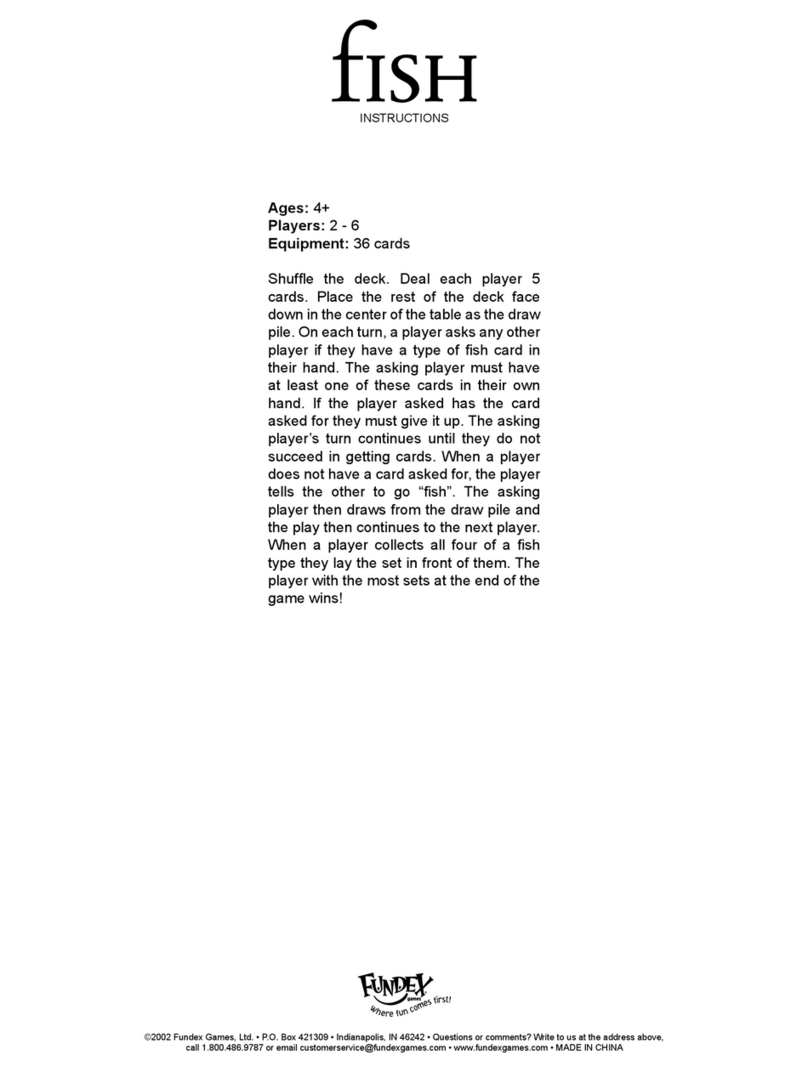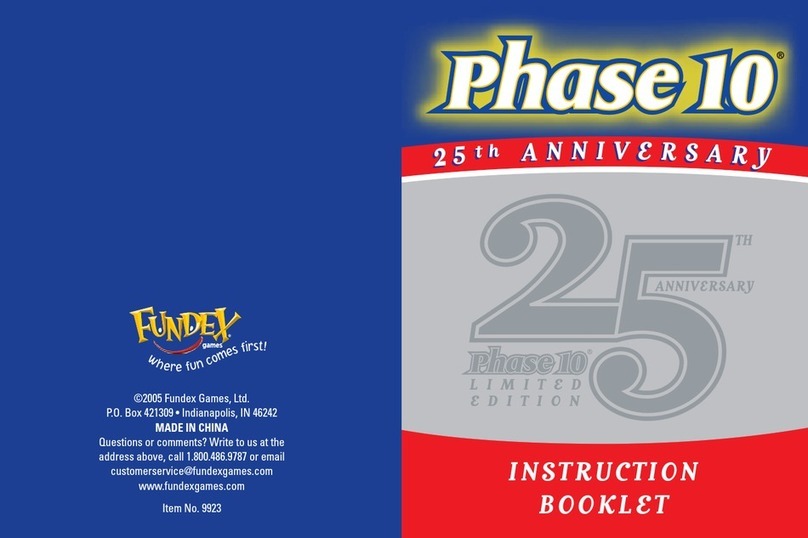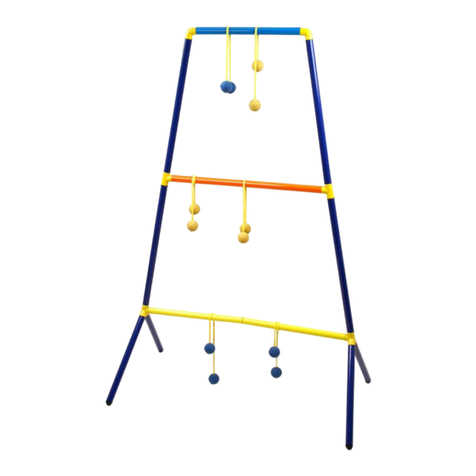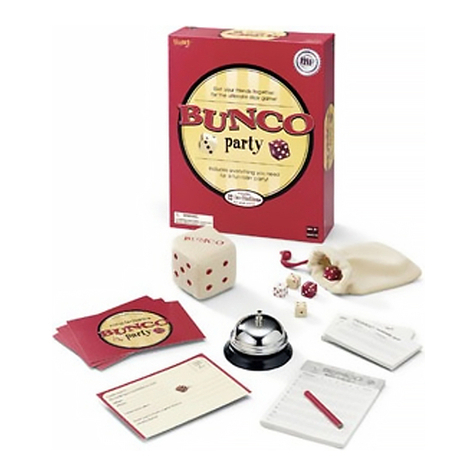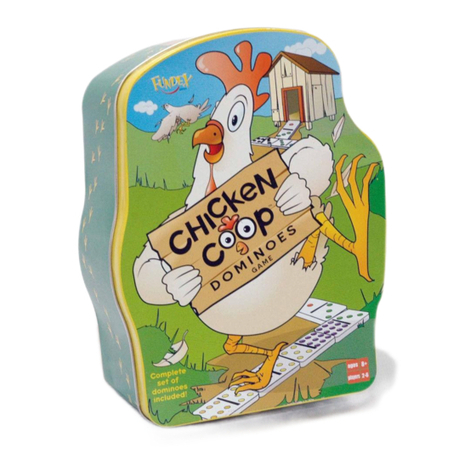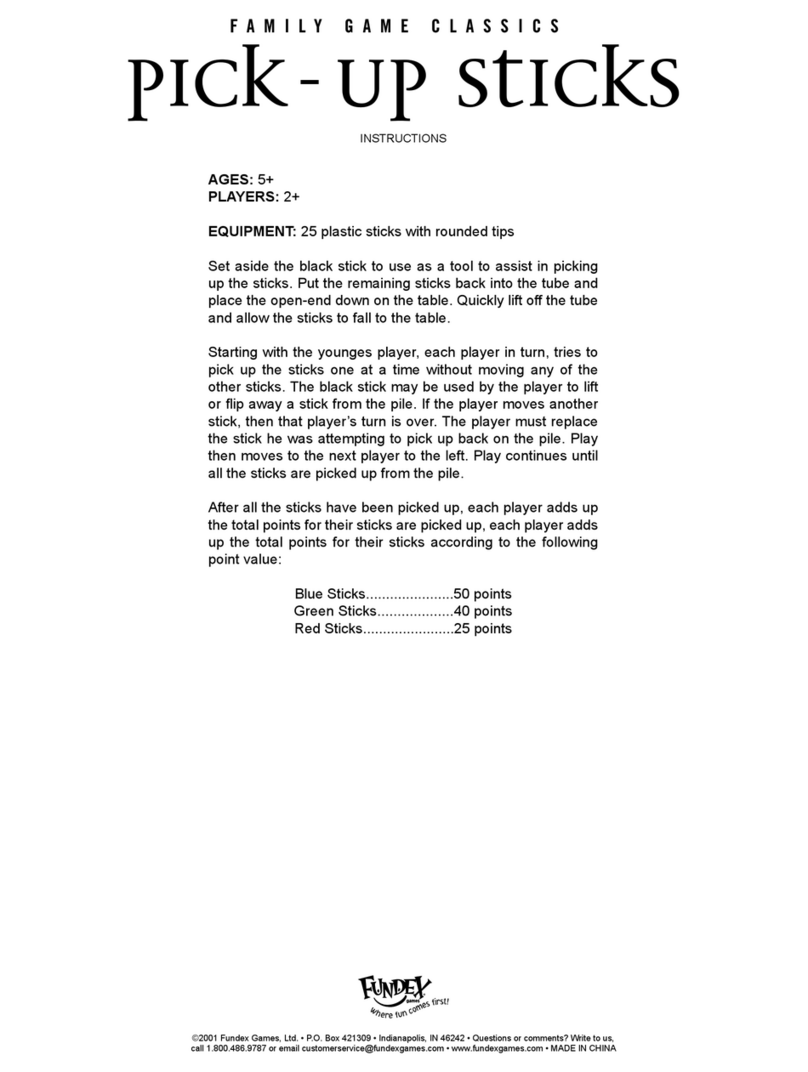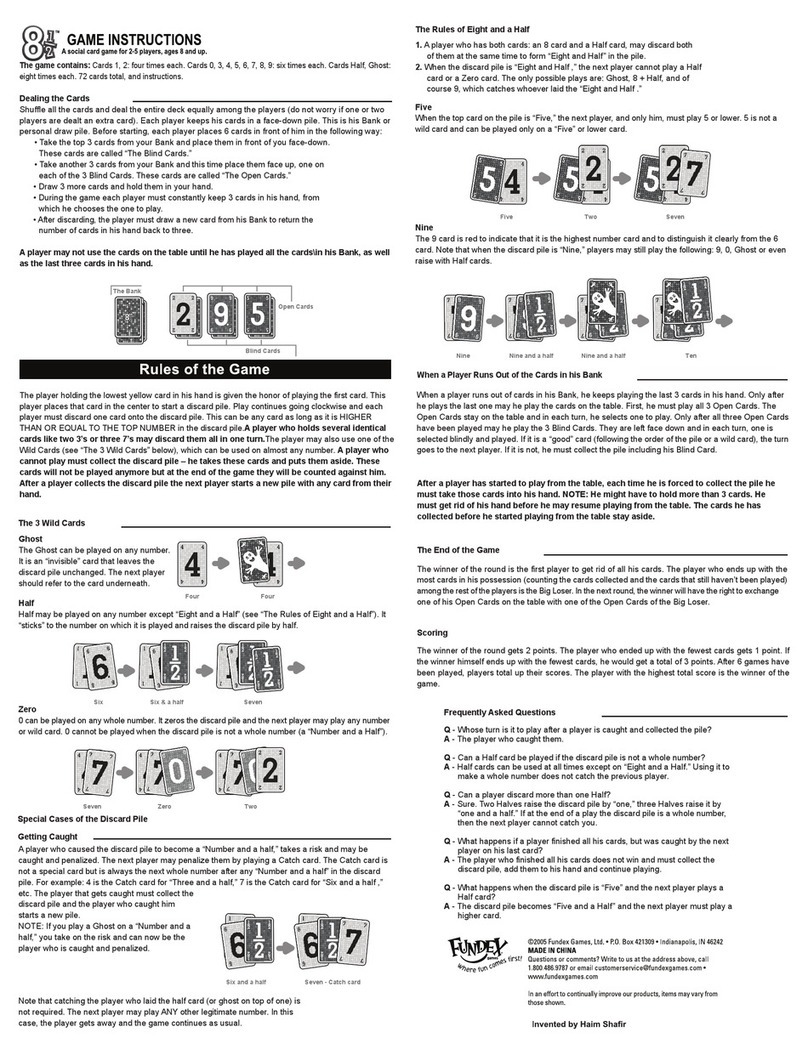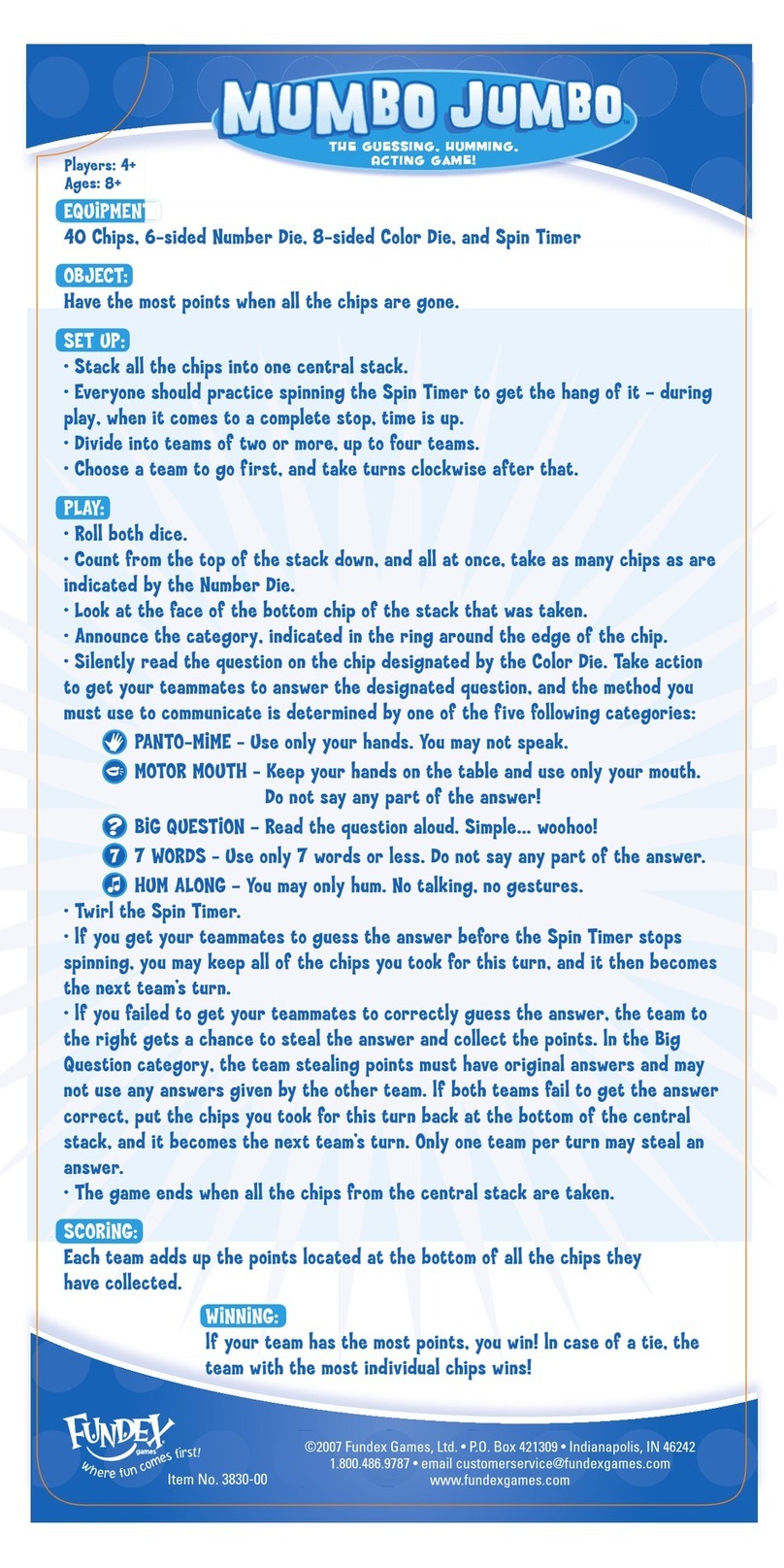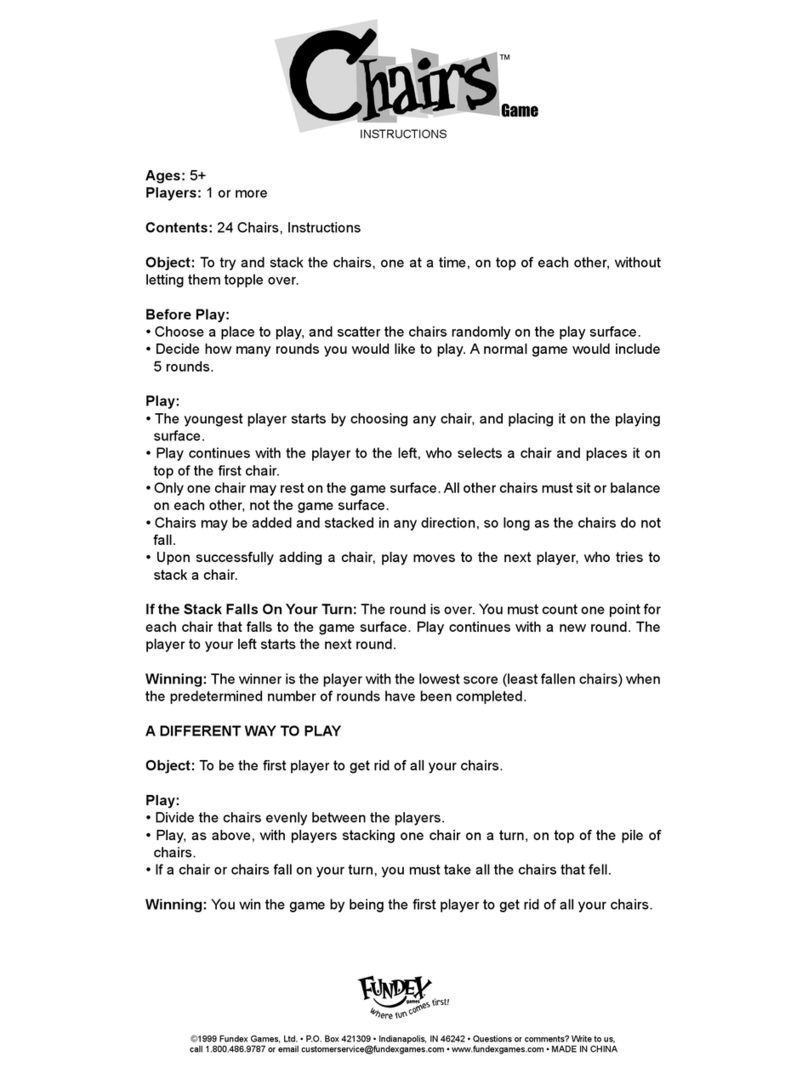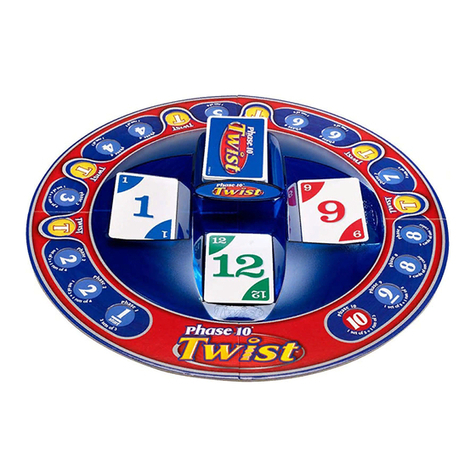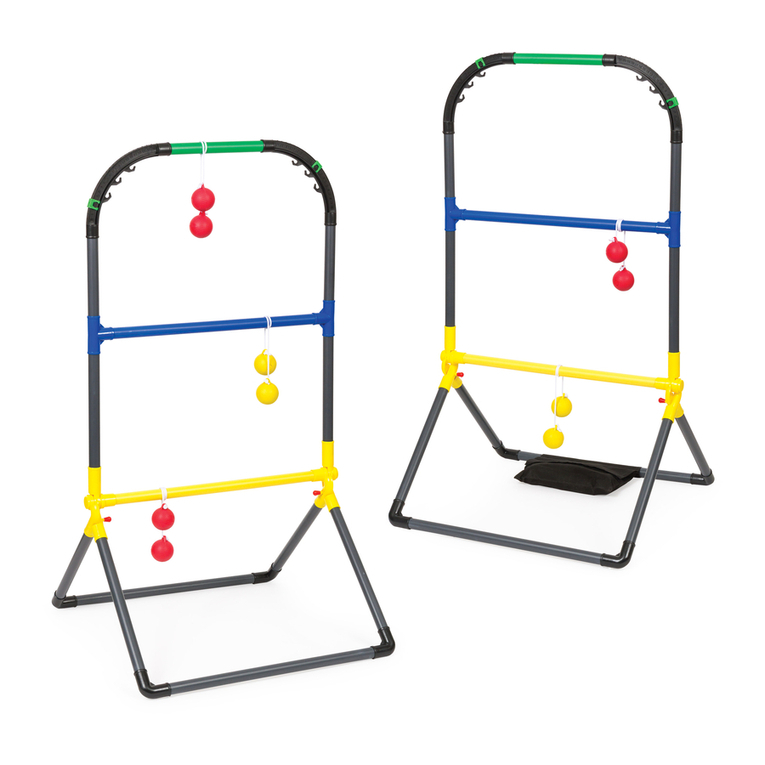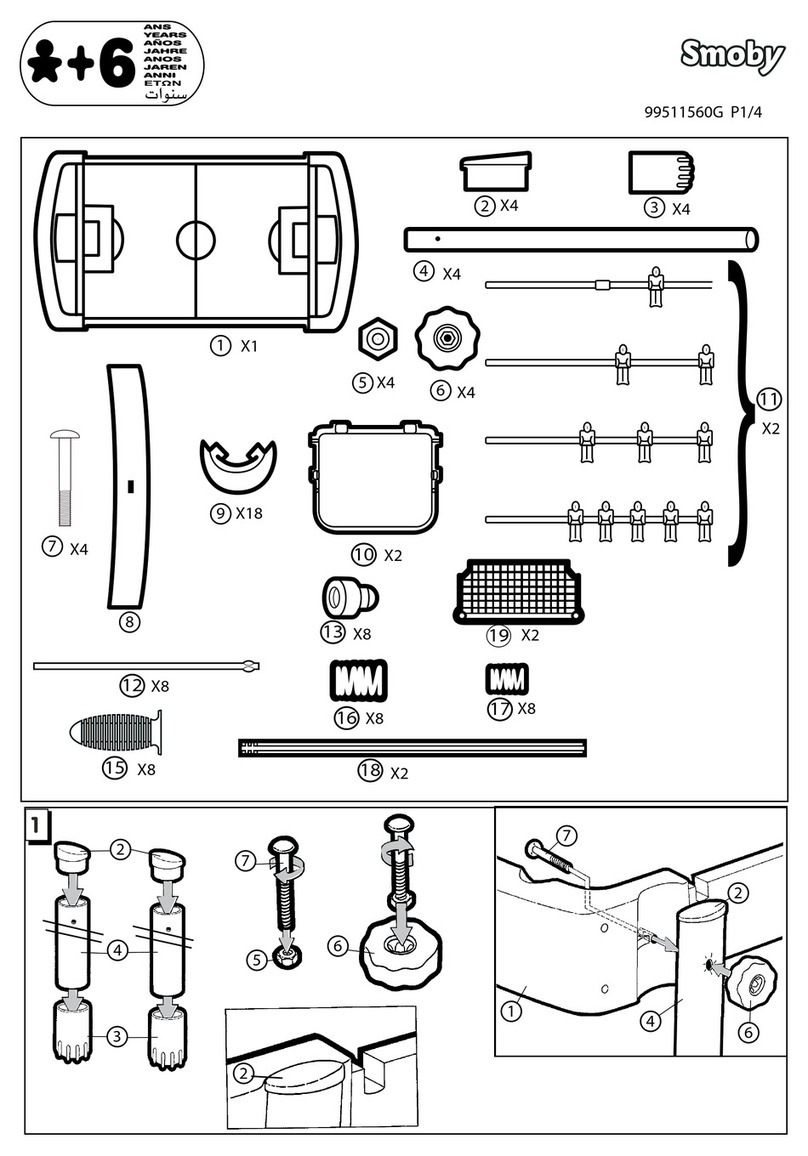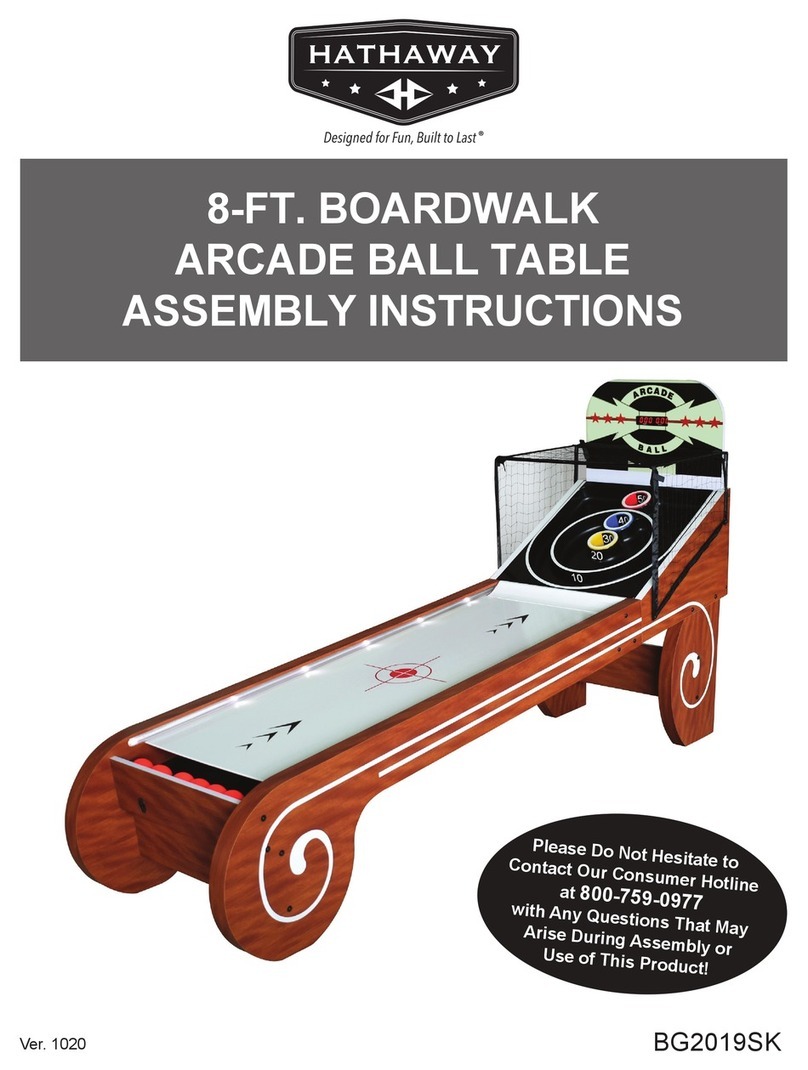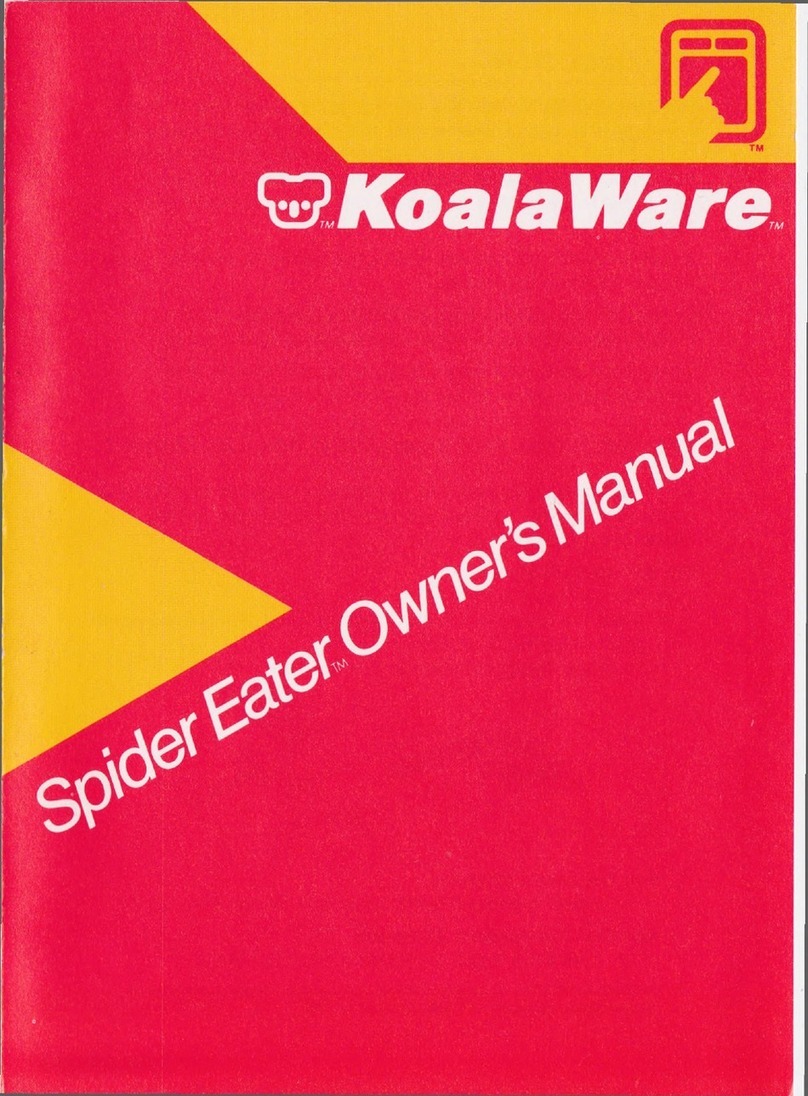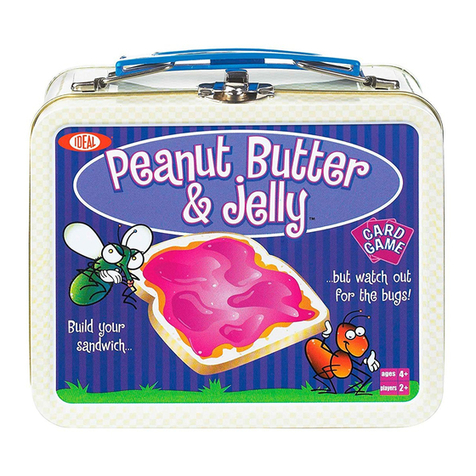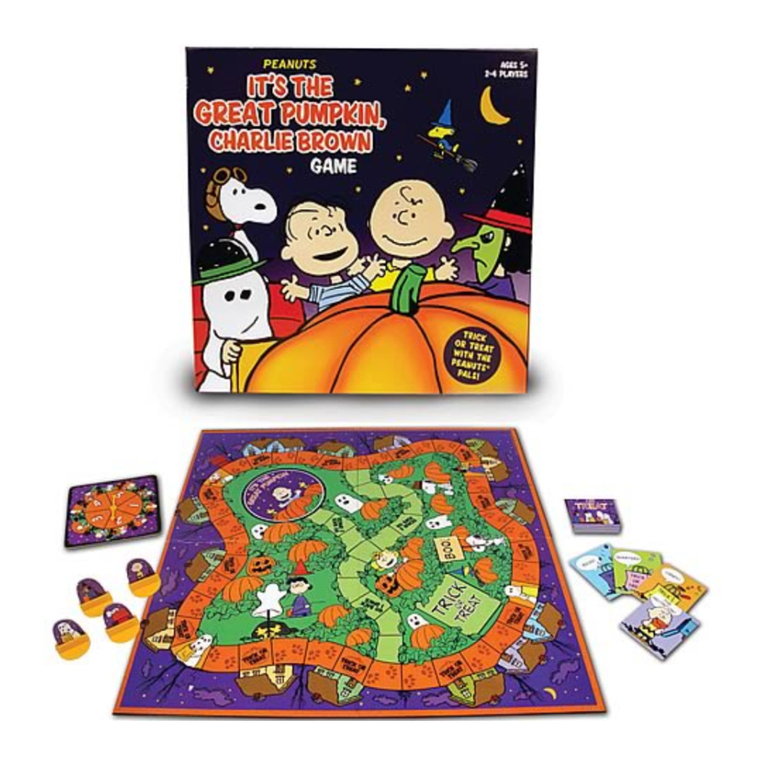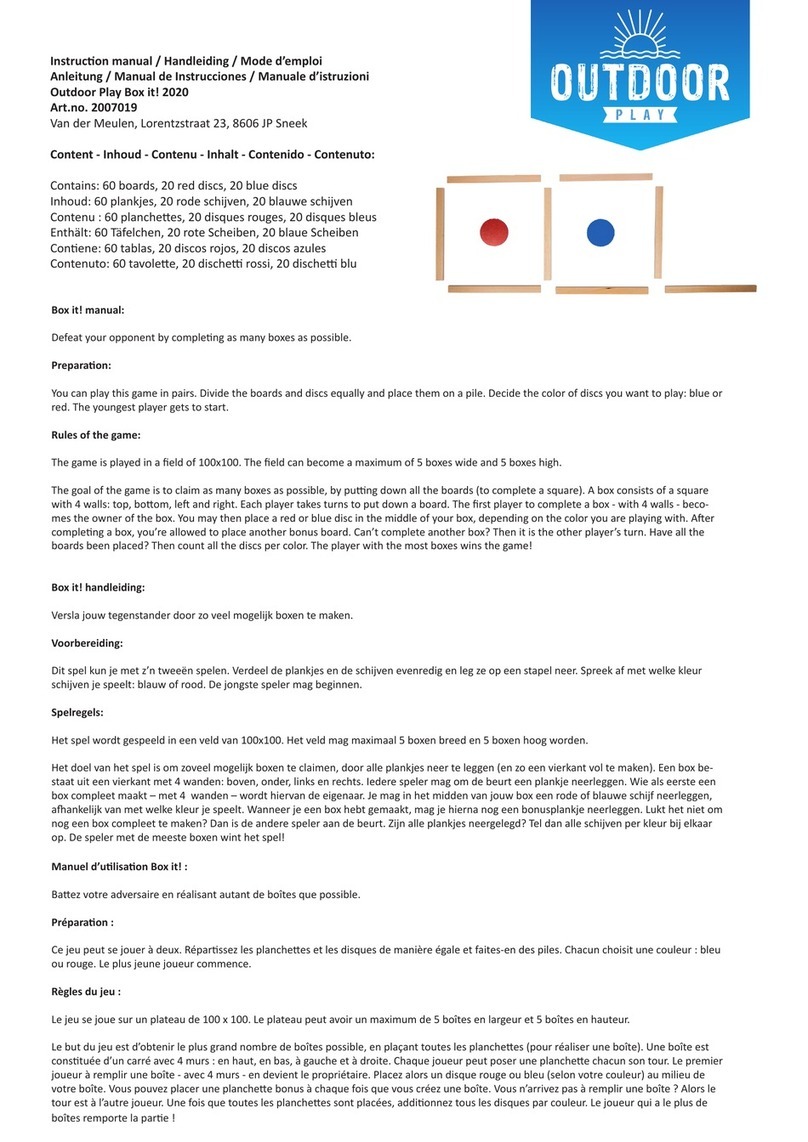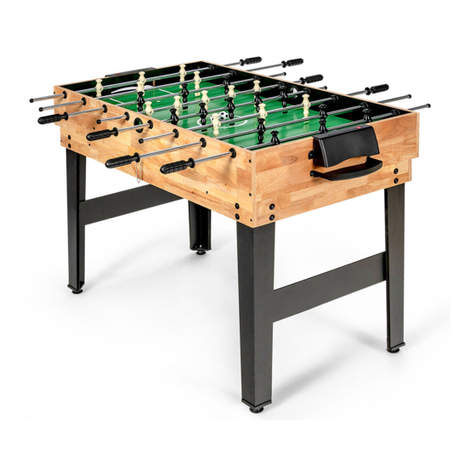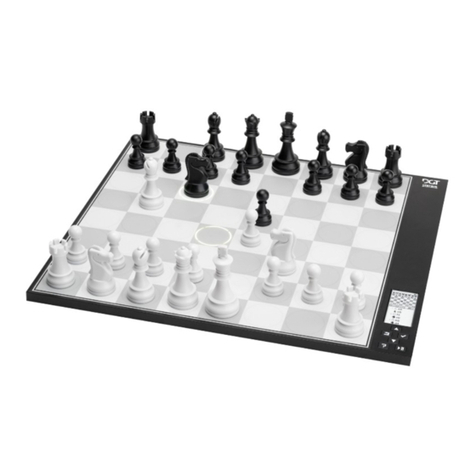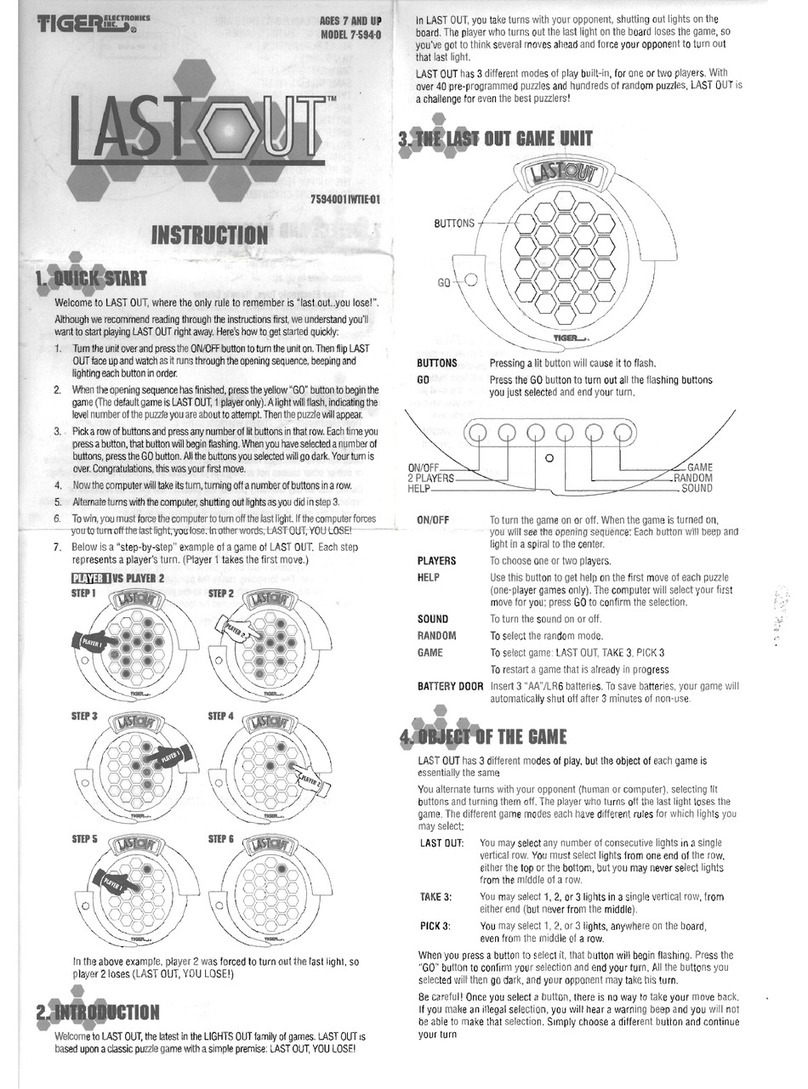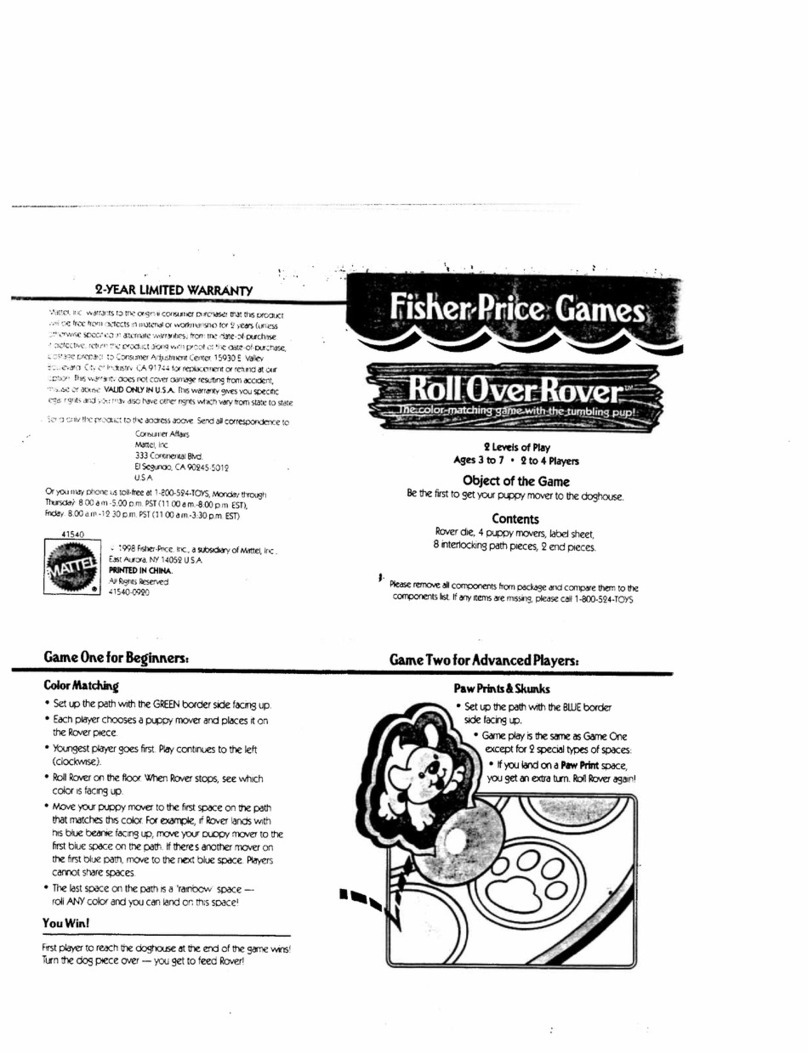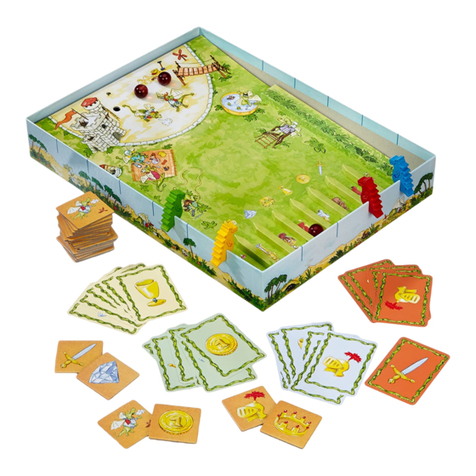WINNING THE GAME
The first player to score 150 points (all of the opponent’s chips) is the winner.
BOGUS PLAY
Players must use dominoes from their hand if they are able to do so. Bogus play occurs
when a player has a domino that could be played but draws or passes the turn. When this
happens, the hand is over and the non-offender begins the next hand with the winner’s
advantage (the ability to start with any domino from the new hand). The non-offender
is additionally given the chips equal to the value of the pips remaining in the offender’s
hand or 50 points in chips, whichever is greater.
There will be no penalty if the person who makes a bogus play realizes that there was a
playable domino in hand before the bogus domino makes contact with the board. The
bogus domino must be shown to the opponent and then reshuffled in the boneyard. However,
if a second domino is drawn when a playable domino was in hand or the domino drawn by
mistake makes contact with the table, the play is immediately considered bogus.
OTHER PENALTIES
If a player draws the wrong number of dominoes at the start of the game, that player will
give the opponent 50 points in chips.
GAMES WITH MORE THAN TWO PLAYERS
High Five™ may easily be played as a three or four-player game. Play just like the
two-player game, but turns pass to the left and score using the following variations:
THREE-PLAYER GAME:
Each player draws six dominoes. A scoring player will be awarded with chips from the person
seated to their right. For example, if Player Three scores 5 points, only Player Two pays
Player Three 5 points in chips. If a player “dominoed,” only the remaining pips of the
player to the right can be counted toward bonus points received at the end of the hand.
The first player to score 150 points (all of the chips of the player to the right) is the winner.
FOUR-PLAYER GAME:
Seat players so that Player One is facing Player Three and Two is facing Four. Each player
draws five dominoes. A scoring player will be awarded with chips from the person seated
opposite. For example, if Player One scores 15 points, only Player Three pays Player One
15 points in chips. The first player to score 150 points (all of the chips of the opposite
player) is the winner.
Dominoes are often called “bones,” “tiles” or “rocks.”
Each bone is divided into two halves, or ends. The side
is the lengthwise area of the domino. Dots, or pips, are
grouped in a suit. Bones with an end without pips are
known as “blanks.” Bones containing matching ends (6-6,
5-5, ect.) are known as “double dominoes,” or “doubles.”
Doubles are also called “Big 6, Big 5” and so on.
OBJECTIVE
High Five™ is the same high-stakes domino game the
professionals play on television! Players earn scoring chips by leaving open-ends that add
up to multiples of five. Collect all of your opponent’s colored chips to win!
SET UP (TWO PLAYERS)
Each player selects a set of colored chips. The remaining chips are set aside and will not
be used. Both players will count chips for their opponents to verify that the correct number
of chips are in play. Each player begins with ten 10-point chips and ten 5-point chips
(150 points).
Both players shuffle the dominoes by sliding them face-down around the playing surface.
Dominoes exposed during the shuffle will be reshuffled. The last player to shuffle will push
the dominoes to the center of the table. Players will then draw seven dominoes each.
Dominoes exposed while drawing must be accepted by the player exposing them. Players
may either cup dominoes in their hands or stand each domino on its side to set up their
hands. Bones that remain in the shuffled pile become the draw pile or boneyard.
end
side
ANATOMY OF A BONE
pips
ENGLISH
INSTRUCTIONS
High Five™ and the High Five™ logo are Registered Trademarks
of Fundex Games, Ltd. and the Professional Domino Association.
TM & © 2006 Professional Domino Association, Inc. All Rights Reserved.
PDAT and PDA logo are Trademarks of the Professional Domino Association.
www.prodominoassociation.com
Licensed and Distributed by Fundex Games, Ltd.
©2006 Fundex Games, Ltd. • P.O. Box 421309 • Indianapolis, IN 46242
MADE IN CHINA
Questions or comments? Write to us at the address above, call 1.800.486.9787
In an effort to continually improve our products, items may vary from those shown.
Butt ends together
to form a line like this! Here, the Big 6 was
the first domino played.
Always play the sides of
the doubles like this!
Now the spinner is
closed, so it is okay
to play dominoes
on the open ends.
Play at least
one domino
here FIRST!
Player One begins with a double 5.
There are 10 open pips on the board.
Player One is awarded a 10-point blue chip
OR two 5-point blue chips (10 points).
Player One adds a 5-6, which closes the double 5.
There are now 6 pips on the board. (6 + 0 = 6)
This is not a multiple of five so Player One does not score.
Player Two joins a 0-5.
There are 10 open pips on the board. (5 + 5 + 0 = 10)
Player Two is awarded 10 points in red chips.
Player Two lays a 4-0.
There are now 10 pips on the board. (4 + 6 = 10)
Player Two is awarded 10 pips in red chips.
ENDING THE HAND
The first player that finishes the hand by getting rid of all their dominoes has “dominoed”
and wins the round.
If no one can play a domino to the table, the game is blocked. To decide the winner of a
blocked game, count the number of pips remaining in each player’s hand. The player with
the fewest remaining pips is the winner of the hand.
No matter if the hand ends in domino or block, round the loser’s remaining pips to the
nearest five and award that number in scoring chips to the winning player. For example,
if Player One has 11 pips and Player Two has 13 pips, then Player One wins and is awarded
15 points in chips (but if Player Two has 12 pips, Player One only receives 10 points).
In the rare case that the game is blocked and both players have the same amount
of remaining pips, no chips are awarded to either player.
BEGINNING A NEW HAND
The person who lost the previous hand will shuffle the dominoes and allow the winner to
draw first. Depending on how the previous hand finished, play resumes in two different ways.
1. If the hand ends in a domino, the winning player receives the winner’s advantage.
The winner may lay down any domino in the new hand to start the next round
(it does not have to be a double).
2. If the hand ends because it is blocked, the next hand begins with the highest double
by calling for the “Big 6” and so forth.
HAND ONE
The first hand of High Five™ always begins with a double. Everyone calls for the “Big 6.”
If no one has the Big 6, continue calling, “Big 5, Big 4,” and so on until a double is played.
If neither player possesses a double, the hands are discarded and the dominoes are
reshuffled and redrawn. Repeat this process until a double is found. The player who
has it will place the double at the center of the table. That player’s turn is over.
The next player will join ends by matching suits.
A double used to start a game is always a spinner. This means that dominoes may be
added to both the ends and sides of this double. In High Five™ only the first double on the
board may be played as a spinner. Play on any other double may only continue on it’s sides.
HOW TO PROPERLY PLAY ON A SPINNER:
Only one domino may be played per turn. If someone is unable to make a play, that player
must draw one domino from the boneyard. If still unable to play, the player must continue
to draw one domino at a time until a playable domino is drawn. If the boneyard is cleared,
that player says “Pass” and the turn moves to the next player. Players must play a
domino if able to do so (see “Bogus Play”).
HOW TO SCORE
Each time someone leaves open ends that add up to a multiple of five, that player is
awarded that value in chips of the opponent’s color.
NOTE: when doubles are played, both ends count toward their value. This means that a
double 6 counts as a 12, a double 5 as a 10 and so on. Once both sides have been
joined with other dominoes, the double is closed and their pips no longer count toward
the total.
5
5
0 6
5
0
5
46
EXAMPLE OF PLAY:
PATENT PENDING
